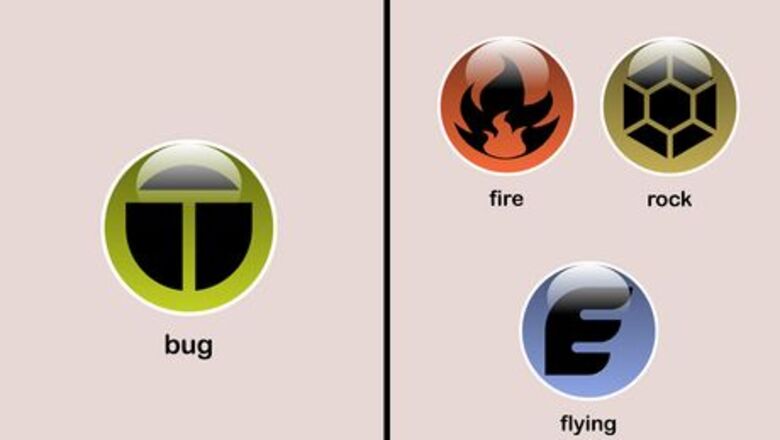
views
Type Weaknesses

Realise the Bug type's weaknesses. Bug types are weak to Fire, Flying, & Rock types. Flying - Many birds eat bugs. Fire - Burns bugs. Rock - Crushes bugs.
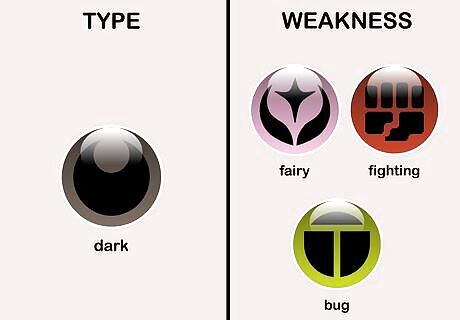
Philosophize about Dark type weaknesses. Dark types are weak to Bug, Fairy, & Fighting types. Bugs - Most generally thrive in the darkness, living underground, behind cupboards, etc.. Fighting - Represents the use of noble, disciplined technique, besting the dirty, underhanded tactics of the Dark type (essentially good vs. evil). Note that the Dark type is called the Evil type in the Japanese versions. Fairy - Also represents a force of good that can overcome evil.
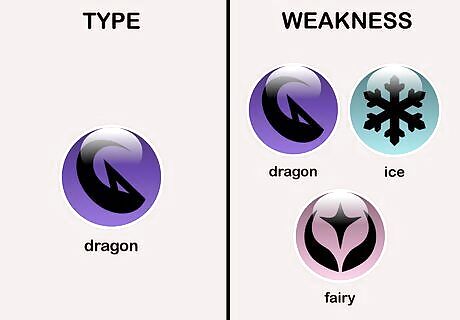
Decipher the weaknesses of Dragon types. Dragon types are weak to Fairy and Ice types, as well as themselves. Dragon - Often considered to be so powerful that they're mostly only beaten by other dragons. Fairy - Represents natural forces, which can be strong enough to overpower anyone. Even the most powerful creatures are dependent on nature. Fairy magic is stronger than dragon magic? Ice - Reptiles often become slow and sluggish in cold temperatures due to being cold-blooded (dragons are often portrayed as being reptiles).

Note the science behind Electric type weaknesses: Electric types are only weak to Ground types, tying them with Normal for the fewest weaknesses of all types. Ground - Electrical grounding creates a low resistance path to discharge current, and is used in circuitry to remove excess charges.
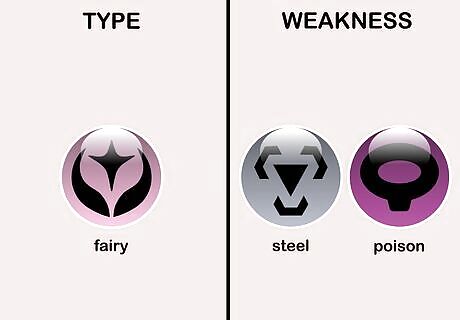
Read up on the lore behind Fairy type weaknesses. Fairy types are weak to Poison & Steel types. Poison - Toxic chemicals that pollute nature, harming or even killing plants & animals in the process. Steel - Steel is primarily formed from iron, which is commonly believed in folklore to ward off supernatural entities such as ghosts and fae creatures. Additionally, steel could be considered an unnatural human creation, and a direct opposite of the natural forces that fairies represent.

Understand the weaknesses of Fighting types. Fairy, Flying, & Psychic. Flying - Airborne targets are generally very fast and nimble, easily dodging melee attacks, then diving in to strike once there's an opening. Fairy - Natural forces (eg. ageing) cannot always be combated. Psychic - The mind's ability to find ways to outsmart and overcome raw strength (ie. brains over brawn).
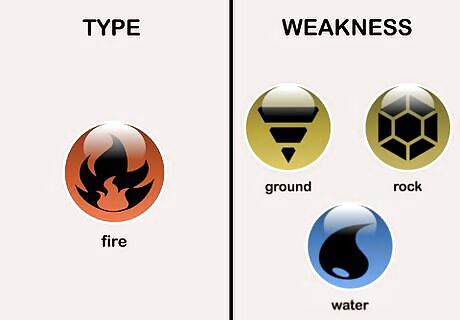
See the reasoning behind Fire type weaknesses. Fire types are weak to Ground, Rock, & Water types. Ground - Sand, dirt, etc. can be used to extinguish fires by smothering and removing their oxygen supply. Rocks - Are incombustible; are also sometimes placed around fires to prevent them from spreading. Water - Extinguishes fires by removing all the heat.
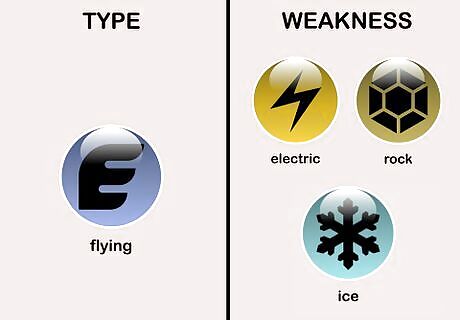
Perceive the weaknesses of Flying types. Flying types are weak to Electric, Ice, & Rock types. Electric - Lightning (or electric sparks for the matter) is more likely to strike objects that are higher up since it creates a shorter path through air. Ice - Many species of birds cannot survive in winter weather, and instead migrate towards the Equator. Rock - Something about the phrase "Kill two birds with one stone"?
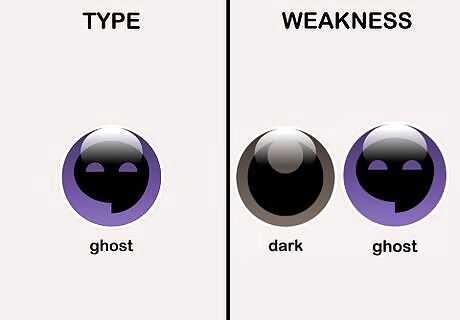
Think about the weaknesses of Ghost types. Ghost types are weak to Dark types, as well as themselves. Dark - Necromancy, a branch of magic used to raise and control the dead (ghosts), is often considered evil. Ghost - Ghosts like Beetlejuice that can posses other ghosts?
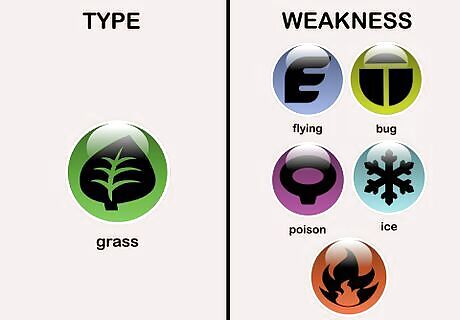
Ascertain knowledge of Grass type weaknesses. Grass types are weak to Bug, Fire, Flying, Ice, & Poison types. Bug & Flying - Many animals eat plants. Fire & Ice - Plants are vulnerable to extreme temperatures. Poison - Weedkiller is sometimes used in farming to kill off weeds.
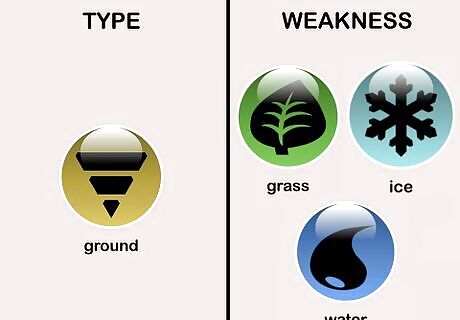
Contemplate Ground type weaknesses. Ground types are weak to Grass, Ice, & Water types. Grass - Plants roots absorb nutrients from the ground. The roots also split the ground while simultaneously holding it together. Ice - Water expands as it freezes, splitting the ground and the pipes that transport it. Water - Turns the ground to mud and can erode it.
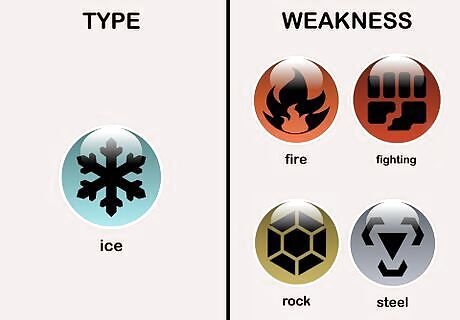
Make sense of Ice type weaknesses. Ice types are weak to Fighting, Fire, Rock, & Steel types. Fire - It melts the ice, duh. Fighting - Represents physical force that can chip away at/break the ice. Rock and Steel - Strong materials used to chip ice, generally to sculpt/break up/harvest it.
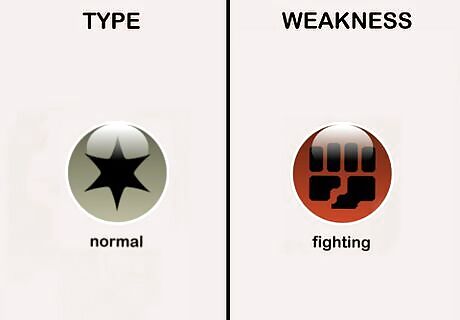
Understand the simplicity of Normal type weaknesses. Normal types are only weak to Fighting types, tying them with Electric for the fewest weaknesses of all types. Fighting - A normal (untrained) person would easily lose against a trained fighter.

Consider Poison type weaknesses. Poison types are weak to Ground and Psychic types. Ground - The earth absorbs poison? Psychic - While the body can be poisoned, the mind is something meta-physical and has the upper hand over poison (mind over matter).
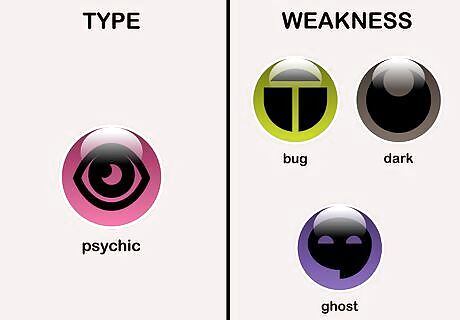
Meditate on the weaknesses of Psychic types. Psychic types are weak to Bug, Dark, & Ghost types. Bug, Dark, & Ghost - Common fears that can ruin someone's concentration, leaving you temporarily unable to function.
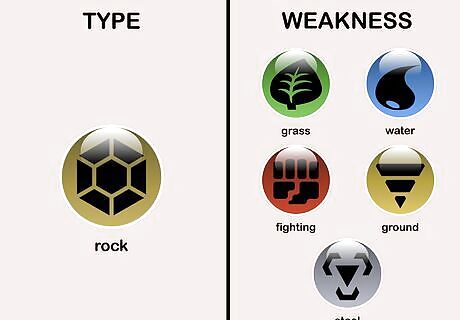
Rationalize the Rock type's weaknesses. Rock types are weak to Fighting, Grass, Ground, Steel, & Water types. Fighting - Physical force that can crack, break, shatter, (etc.) a rock. Grass - Moss growing on rocks and weeds growing in between the cracks? Ground - Can move (or sometime swallow) rocks during strong enough earthquakes/sinkholes/landslides, causing them to break if they fall hard enough. Steel - Used to make drills and mining picks. Water - Can weather and erode rocks, breaking them up and eventually turning them into dirt and sand.
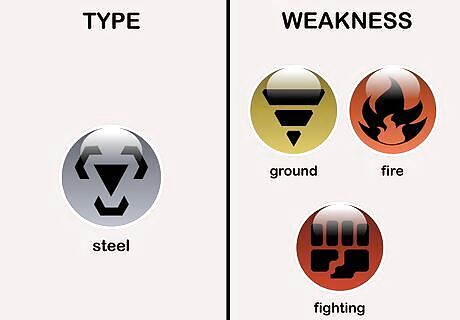
Contemplate the Steel type's weaknesses. Steel types are weak to Fighting, Fire, & Ground types. Fighting & Fire - Steel objects are made by shaping hot metal with physical force. Alternatively, steel may be dented by strikes from a fighter, and its structural integrity lowered by intense heat as it melts. Ground - Sufficiently strong enough earthquakes can destroy steel structures (eg. some buildings). An earthen mould may sometimes be used to shape molten metal?
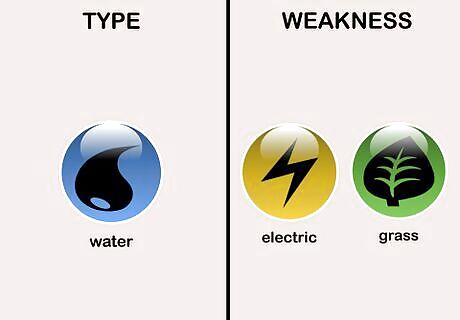
Absorb the Water type's weaknesses. Water is weak to both Grass & Electric types. Grass - Plants absorb water through their roots. Electric - Impure water (ie. water containing dissolved minerals) can conduct electricity, allowing the current to interact/interfere with anything in the water.
Type Resistances

Discern the Bug type's resistances. Bug types resist Fighting, Grass, & Ground types. Fighting - Bugs are small and nimble targets (especially flying ones such as houseflies), making them hard to hit. Grass - Some bugs may eat through leaves, plants or even grass. Ground - Many bugs already walk/tunnel through the ground (eg. ants, centipedes), and are built to handle the terrain.
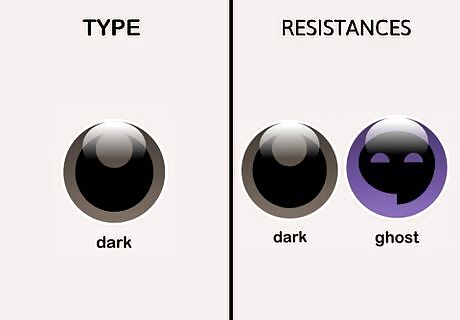
Understand the Dark type's resistances. Dark types resist both Ghost types and themselves. Dark - Dark types are already aware of the underhanded tactics their own type uses, and thus are unlikely to fall for them. Ghost - Dark forces can control the undead and use them for evil, so an evil force predicts what can happen.
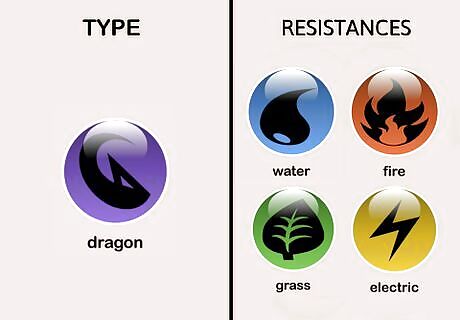
Read all about the resistances of the Dragon type. Dragon types resist Electric, Fire, Grass, & Water types. Electric - Some dragons (eg. Cynder from Skylanders) can shoot electricity. Fire - Arguably the most well known element dragons are thought to wield. Grass - The dragon fire burns through leaves, grass and/or other plants. Water - Many dragons, especially Chinese ones, famously have power over water and weather.
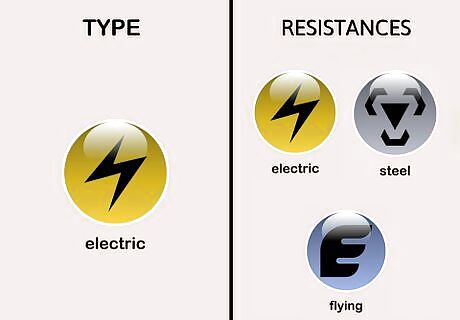
Formulate Electric type resistances. Electric types resist Flying and Steel types, as well as themselves. Electric - Their bodies are naturally resistant to large amounts of electricity to protect them from their own attacks, hence why they're also immune to the paralysis status effect. Flying - Lighting always strikes higher up, making it harder for flying foes to get close enough to deal damage? Steel - Steel is an conductor, meaning electrical charges travel through them.

Surmise the resistances of the Fairy type. Fairy types resist Bug, Dark, and Fighting types. Bug - Fairies have a higher level of sentience than ordinary bugs, granting them better fighting techniques. Dark - Fairy's power of nature and purity is stronger than the Dark type's evil and deceit. Fighting - Fairy magic is stronger than conventional fighting techniques, granting a stronger offense/defense.

Seize knowledge of the Fighting type's resistances. Fighting types resist Bug, Dark, and Rock types. Bug - ??? Dark - Good is stronger than evil (the Dark type is called the Evil type in the Japanese versions). Rock - Can easily be caught/deflected by skilled fighters if thrown at them.

Know the Fire type's resistances. Fire resists Bug, Fairy, Grass, Ice, and Steel types, as well as themselves. Bug & Grass - Both can be burned through, partially if not completely destroying them before they can do their full damage. Fairy - Fires can burn through and destroy nature if they get out of control. They've also been used by humans to clear land. Fire - Are already immune to/have a strong resistance to the immense heat their own bodies can generate, hence why they're also immune to the burn status effect. Ice & Steel- Neither can fully withstand the heat, and may melt before they can do their full damage.
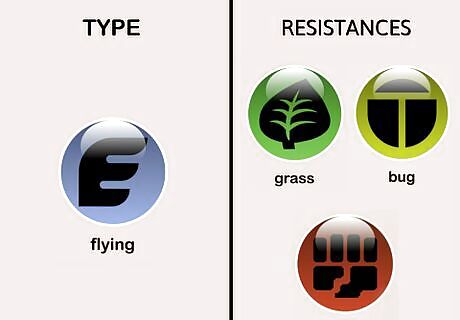
Understand the Flying type's resistances. Flying types resist Bug, Fighting, and Grass types. Bug - Are the natural prey of many birds, and as such are much weaker than them. Fighting - Are generally too high up or too agile for melee attacks from grounded foes to affect them.
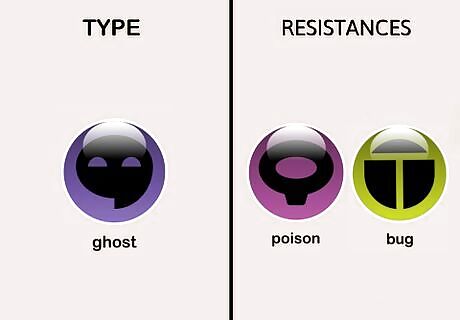
Understand the Ghost type's resistances. Ghost types resist both Bug and Poison types. Bug - Ghosts likely aren't scared of bugs, with some using them to create nightmares for the people they posses. Poison - Ghosts are incorporeal, lacking physical bodies that can be poisoned.

Cognize the resistances of the Grass types. Grass types resist Electric, Ground, and Water types, as well as themselves. Electric - Wood is non-conductive, and can be used to safely move live wires. Grass - Plants with competing needs will often "fight" each other by growing out their roots/leaves in an attempt to steal all the nutrients or block the other's sunlight. Some plants, such as Mistletoe, the Indian pipe, and Dodder, are parasites that leech water and nutrients from other plants, sometimes smothering them in the process. Ground - Plant roots help hold the ground together (ie. why deforestation increases the risk of landslides), which are under the control of Grass types. Water - Plants can absorb the majority of the water from the attack using their roots.
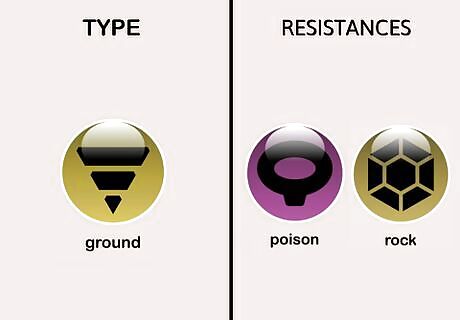
Form a knowledgable foundation of Ground type resistances. Ground types resist Poison and Rock types. Grass types are firmly rooted in the ground, so things like earthquakes can't do as much damage as they would to other Pokemon. Ground - Bug types spend a lot of time both on and under the ground, so they're used to it. Poison - Gradually absorbs and breaks down the poison over time? Rock - Rocks come from the ground?

Make sense of the Ice type's resistances. Ice types only resist themselves. Ice - It can't freeze other ice types (as they're already frozen, and thus, immune to the freezing status effect), nor is it hot enough to melt them either. It can only bang against more ice, breaking both apart in the process. Ice has the fewest resistances of any type (apart from Normal, which has none).
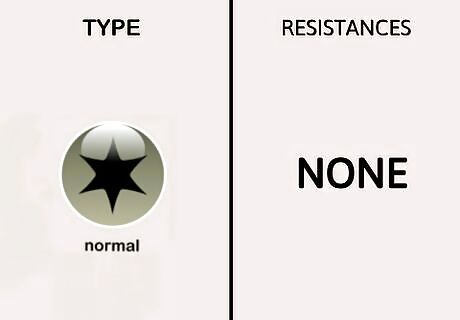
Reason out the Normal type's lack of resistances. Normal types (by definition) lack any special abilities that'd give them an advantages over other types. Normal types are the only ones without any resistances or super-effective moves, essentially making them a jack-of-all-trades.
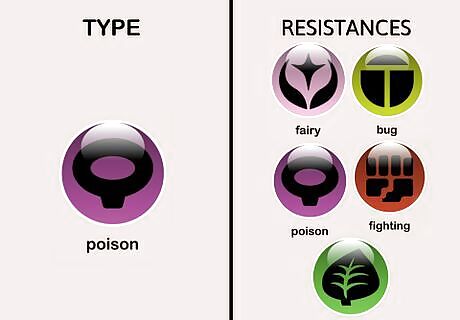
Construe information about the Poison type's resistances. Poison types resist Bug, Fairy, Fighting, and Grass types, as well as themselves. Bug - Insecticide is used to kill bugs and prevent them from attacking plants. Fairy - Weakens/kills off most of the natural energy before it can do it's full damage. Fighting - Like in real life, drugs or other things can bring fighters or sports players down after the full effect. Grass - Weedicide kills weeds, preventing them from invading gardens. Poison - Toxic plants and animals (by necessity) have a natural resistance to their own species' poison/venom (some can resist those from other species aswell) to avoid getting hurt by their own toxins. It's also why they're immune to the poison status effect.
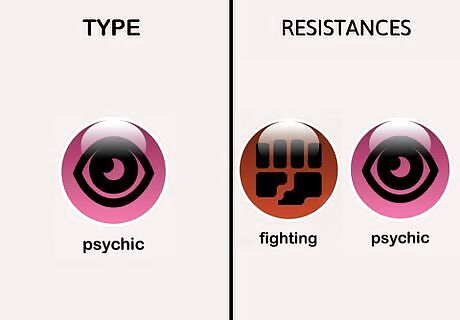
Assimilate knowledge of the Psychic type's resistances. Psychic types resist Fighting types, as well as themselves. Fighting - The power of the mind is often stronger than merely using brute strength. Psychic - As the common saying says, “Great minds think alike.” This could mean that a Psychic Type can expect what is to come from another.
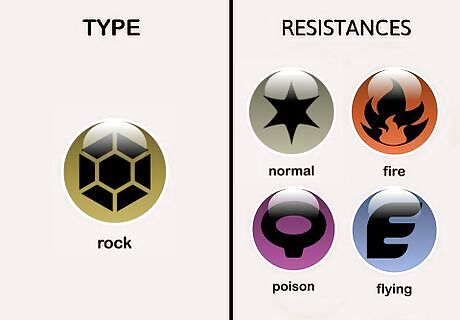
Embed the resistances of the Rock type within your memories. Rock types resist Fire, Flying, Normal, & Poison types. Fires - Rocks are non-combustible, and cannot be melted by normal fires. Normal people cannot easily break large boulders. Poison - Rocks cannot be poisoned as they're not alive.
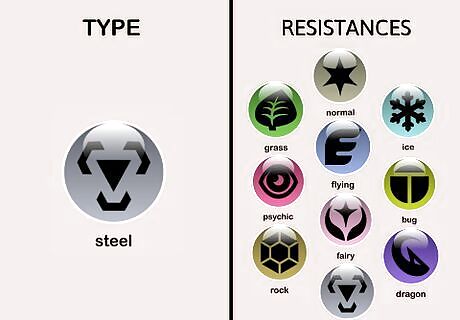
Appreciate the Steel type's resistances. Steel types resist Bug, Dragon, Fairy, Flying, Grass, Ice, Normal, Psychic, and Rock types, as well as themselves. It also has the most resistances of all types. Bug - Cannot bite/sting through hard metal. Dragon & Fairy - Both attacks get weakened/warded off by the the iron in the steel. Flying - Birds and other flying creatures can have a hard time flying due to buildings in their way. Grass - Scythes and clippers that can cut through the majority of the attacks. Ice & Rock - Both are usually much "softer" than steel Normal - The average person would likely not be able to break through a material like steel without specific tools. Psychic - Tin foil hats? Steel - Can only scratch against more of itself due to being the same material and having the same density.
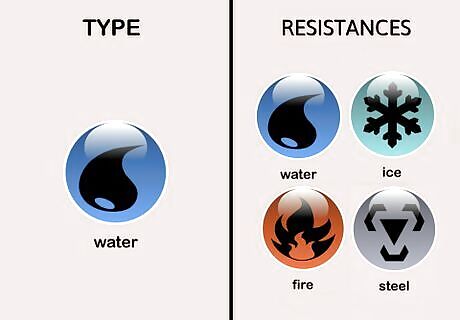
Pick up on the resistances of Water types. Water types resist Fire, Ice, and Steel types, as well as themselves. Fire - Extinguishes most of the fire before it can do it's full damage. Ice - Water is warmer than ice; although not as hot as fire, it's enough to cause it to melt. Steel - Steel can become corroded in water, thus weakening steel-type attacks.
Type Immunites
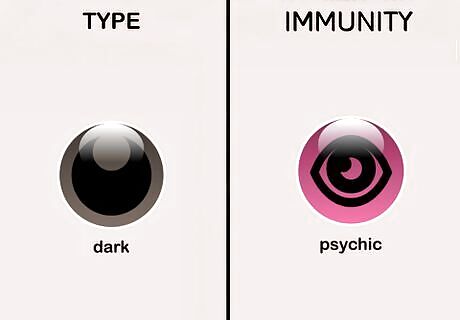
Grasp at the meaning of the Dark type's immunites. Dark types are immune to Psychic types. Psychic - Evil can sometimes control the minds of common people.
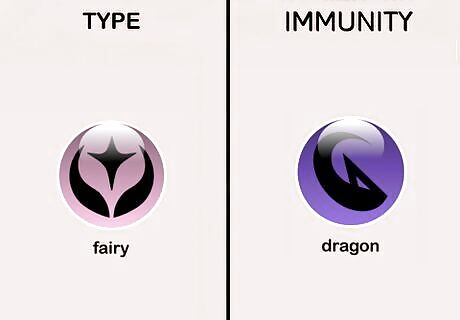
Think about immunities of the Fairy type. Fairy types are immune to Dragon types. Dragon - Mythology depicts Dragons as evil and Fairies as heroic. Balancing reasons?
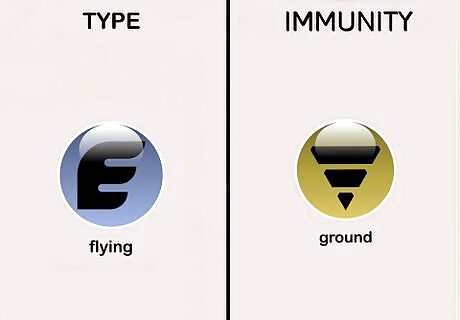
See the reasoning behind the Flying type's immunites. Flying types are immune to Ground types. Ground - Grounded foes simply can't reach flying targets far above them.
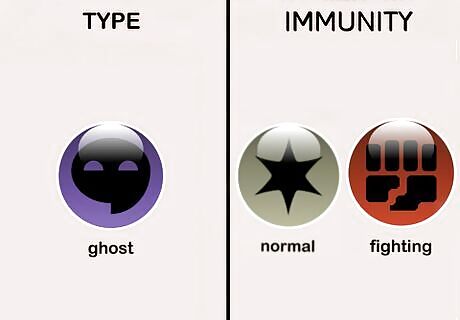
Interpret the Ghost type's immunites. Ghost types are immune to Fighting and Normal types, giving them the most immunities of all types. Fighting - Ghosts are incorporeal, causing punches to just pass right through them. Normal - The physical and spirit worlds generally don't interact under normal circumstances.

Know the science of the Ground type's immunites. Ground types are immune to Electric types. Electric - Ground types are naturally insulated against electricity, preventing the charges from travelling into them.

Understand the Normal type's immunites. Normal types are immune to Ghost types. Ghost - The physical and spirit worlds generally don't interact under normal circumstances.
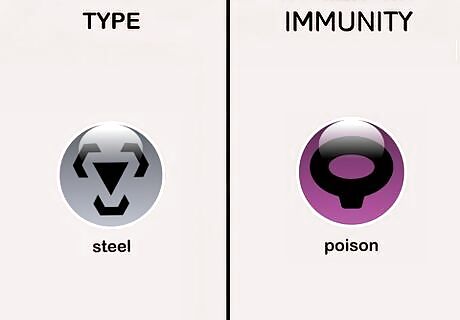
Don't neglect to learn about the Steel type's immunites. Steel types are immune to Poison types. Poison - Steel isn't alive, nor is it porous enough for the poison to penetrate it even if it was.
Other Factors
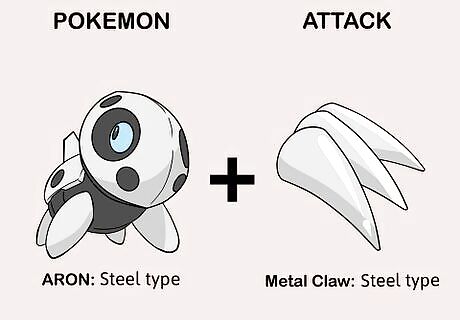
Take advantage of Same Type Attack Bonuses (STABs). In the games, when a Pokémon uses an attack with the same typing as one of it's own, it'll get a 50% boost to it's attack power, which can make a big difference in battle. For example, an Aron (Steel) using Metal Claw, or a Venusaur (Grass/Poison) using Leaf Storm or Venoshock.
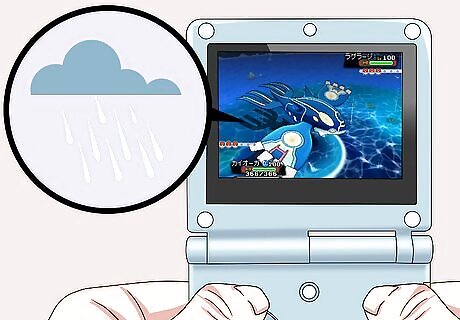
Notice the weather conditions. Weather can affect your Pokémon's effectiveness in a battle by boosting/harming the strength of certain move types, or by changing the typings of specific Pokémon. For example, Harsh Sunlight buffs Fire-type moves, and debuffs Water-type moves, while Rain does the opposite. Hail and Sandstorms deal small amounts of damage each turn to all non Ice and Rock/Ground/Steel type Pokémon on the field respectively. Castform will change its typing from Normal to Fire/Water/Ice during harsh sunlight/rain/hail respectively.
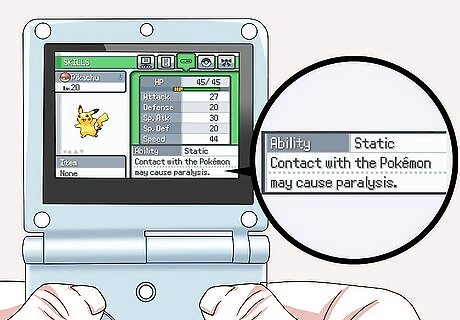
Get special abilities. Certain abilities affect the bearer, while others affect allies or opponents. Get abilities that will help your team and be sure to watch out for other Pokémon using their abilities against you. Levitate is an example of ability that affects the bearer, effectively turning them into a psuedo-Flying type, making Ground-type attacks useless. Intimidate however, lowers the physical attack power of all opponent Pokémon on the field. Don't be afraid to switch out your Pokémon for different abilities should the situation call for it!

Utilize held items. Held items provide various effects to the Pokémon holding them. Some of the categories include: Berries - Some weaken the effects of super effective moves, while others heal or cure status conditions. Mega Stones - Allows the respective Pokémon to Mega Evolve. Memories - Changes the typing of a Silvally with the RKS System ability, along the typing of its Multi-Attack. Plates perform the same role with Arceus and its Judgement move, with the added benefit of working like type-enhancers for all other Pokémon. Type-enhancers - Boosts attacks of the same type by 20% (10% prior to Gen IV). Gems - These work similarly to type-enhancers, providing a one-time 30% boost (50% in Gen V) before being consumed. Z-Crystals - Allows the holder to perform powerful Z-moves.















Comments
0 comment